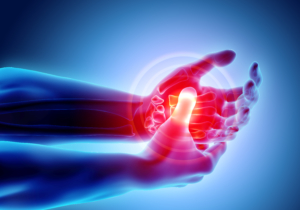Rheumatoid Arthritis and Seating – What To Consider
Woman are more prone to the diagnosis on a factor of 1 in 3.
Rheumatoid arthritis (RA) affects around 400,000 people in the UK. It affects people of all ages, including children.
Signs and Symptoms
RA symptoms can come and go, clients often have periods of flare-ups where the symptoms are exacerbated and at other times can be minimal. They include:
- Well being – general feeling of malaise.
- Joint pain and tenderness, usually described as a throbbing.
- Joint deformity.
- Stiffness, especially in the morning after a period of rest or inactivity.
- Tiredness (fatigue), depression, irritability, due to the autoimmune nature of the condition.
- Flu-like symptoms, including feeling generally ill, feeling hot and sweating.
- Weakness and muscle wasting
- Reduced range of movement in all joints affected.
- Standing – ability to stand in a static position is inhibited as movement produces synovial fluid and helps to lubricate the joint.
- Reduced grip strength.
- Fine motor skills are more inhibited with the client requiring more gross movement to complete the task.
Cause
Rheumatoid arthritis is an autoimmune condition that targets affected joints, tissues and organs which leads to significant pain, swelling and joint deformity.
The outer covering (synovium) of the joint is the first place affected. This can then spread across the joint, leading to further swelling and a change in the joint's shape; it causes the bone and cartilage to break down. The joints most affected are the hands and feet.
People with rheumatoid arthritis can also develop problems with other tissues and organs in their body, including eyes, heart and lungs.

Seating
Sitting someone with Rheumatoid arthritis needs to take into account the deteriorating and autoimmune nature of the condition.
Due to the deteriorating nature of the conditions and the fact that the conditions affects each person in a unique way, there are no set rules about suitable seating. However the chair should enable the user to:
- Be comfortable.
- Be seated in a position that promotes good posture.
- Reduce any pressure damage from sitting for prolonged periods.
- Continue to allow them to carry out normal activities whilst in a seated position.
- Want to use the chair, so it meets their own aesthetic needs and fits in with their décor.
Considerations when looking for a suitable chair.
- The height of the seat must allow the user to sit with their feet flat on the floor. Always remember to ask whether a client uses slippers or not as this will affect height.
- The seat width needs to provide enough support to prevent a user slumping to either side in the chair, which could impact hugely on joint deformity.
- The seat depth should be long enough to support the femur but not too long to cause pressure problems behind the knees.
- The back should be high enough to support the upper limb and avoid pressure points on the upper limb large joints.
- The handset needs to be able to be used by a client who has or may develop poor hand dexterity.
- Education of the client or carer to remember to move regularly to improve synovial fluid movements and reduce stiffness.
- The fabrics and any comfort padding should be discussed with the client to make sure it meets their needs.
Recommended seating
Below we have linked to some of the chairs in the Repose range that might be considered. Others in the range may be suitable, but this will depend on the clients conditions.
